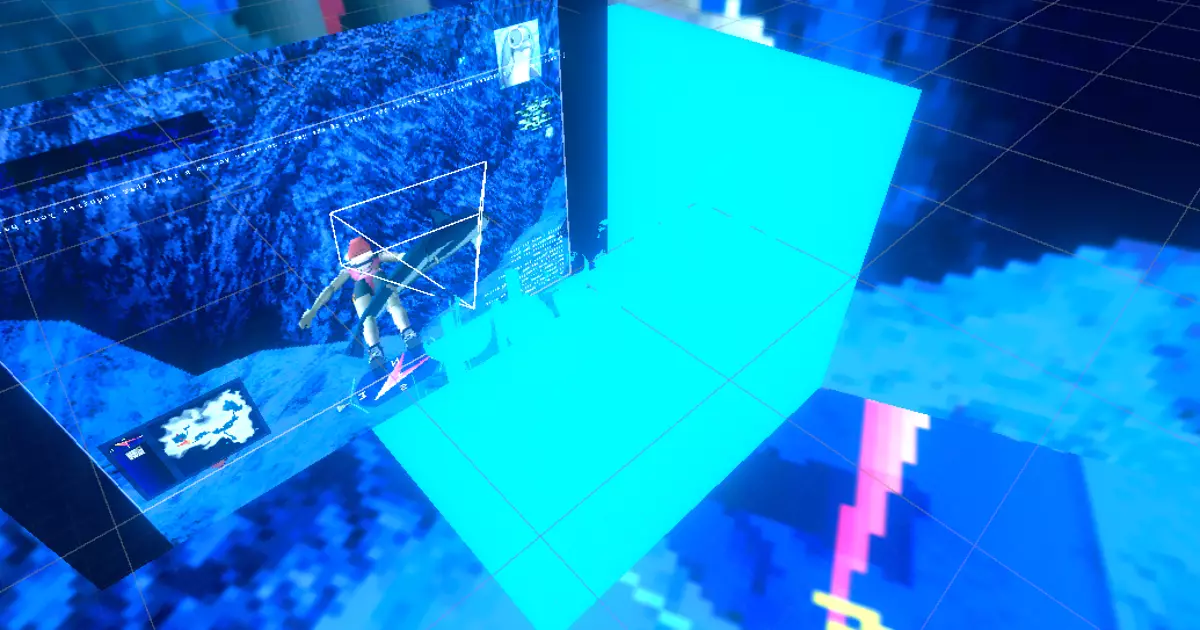In the current landscape of indie games, nostalgia often melds with creativity, yielding experimental works that push the boundaries of traditional gameplay. A shining example of this phenomenon can be seen in “Water Level/b.l.u.e. EXPLORATION,” crafted by the visionary game designer Hatim Benhsain. This unique project pulls players into a surreal experience, where the echoes of the PlayStation 1 (PS1) resonate through a complex tapestry of borrowed elements from beloved titles. Instead of being relegated to the shadows of its genre, this game seeks to redefine our perspective on aquatic environments in video gaming.
Many younger gamers perhaps identify the PS1 era primarily with horror games, typically characterized by their dark palettes and unsettling atmospheres. This critical viewpoint can overshadow the vibrant and diverse experiences that the platform initially offered. “Water Level/b.l.u.e. EXPLORATION” acts as a counter-narrative to this monochrome interpretation, reminding players that the PS1 was more than a host for survival horrors and gloomy aesthetics. Instead, it was a vibrant canvas filled with color, creativity, and innovation.
Drawing inspiration from the Japan-exclusive title “b.l.u.e.: Legend of Water,” Benhsain introduces a playful twist on this nostalgic classic. In “Water Level/b.l.u.e.,” players navigate a whimsical world infused with elements from various iconic games. A significant theme within this project is not just about swimming but rather about swimming through layers of gaming history, where levels morph and intermingle, creating a vibrant collage of visual and auditory stimuli.
At the heart of “Water Level/b.l.u.e.” lies the notion of “plunderludic” gameplay—a term coined by Benhsain to characterize games constructed from the remnants of other games. Unlike conventional interactive collages, plunderludic games establish a new narrative and experience by ingeniously remixing existing content. This innovative approach opens discussions about copyright, creativity, and the boundaries of game design.
Benhsain’s design choices illustrate that emulation isn’t merely about replication but rather commentary and transformation. By introducing player-controlled diversions through borrowed content from games like “Dark Souls,” “Super Mario 64,” and “Kingdom Hearts,” he crafts a dialogue between the past and present. This creates layers of meaning, allowing players to engage with familiar elements in entirely new ways, smoothly bridging the gap between nostalgia and modern innovation.
One of the most enchanting aspects of “Water Level/b.l.u.e.” is its treatment of water as both a thematic and gameplay element. Swimming, in this context, transcends mere movement; it transforms into a metaphorical exploration of creativity itself. As players navigate through the aqueous landscapes, they encounter not only physical challenges but also an artistic methodology that reflects the fluidity and depth of both water and game design.
In stark contrast to the daringly realistic aquatic environments found in today’s advanced gaming engines—like in “Subnautica”—Benhsain celebrates the aesthetic charm of early 3D mechanics. The controls hearkening back to the pre-DualShock era add an endearing quality, transporting players into an 8-bit-inspired reality where the simplicity of movement offers an avenue for complex exploration. This whimsical take on aquatic worlds sparks a dialogue about the loss of magic in video game design, as contemporary titles often prioritize realism over artistry.
Ultimately, “Water Level/b.l.u.e. EXPLORATION” serves as a joyful reminder of the beauty endemic to the act of play itself. The game intertwines its myriad cultural references, allowing players to experience joy, curiosity, and a sense of freedom—a rare feat in today’s game design landscape. Whether or not it’s rooted in water, the act of discovery and exploration has a timeless appeal that resonates across generations.
Hatim Benhsain’s project invites players to experience an intricate blend of nostalgia, originality, and joyous creativity. Setting aside the prevalent associations of horror and gloom associated with the PS1, we may find ourselves immersed in vibrant colors and rich narratives that celebrate the history of video gaming. As we dive into this eclectic aquatic realm, we should embrace the varied experiences it offers, ensuring that the days of magic and creativity are far from over.


Leave a Reply